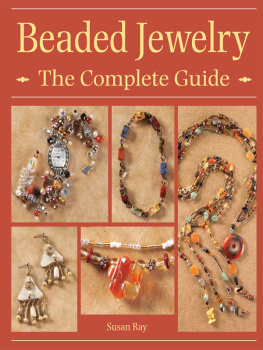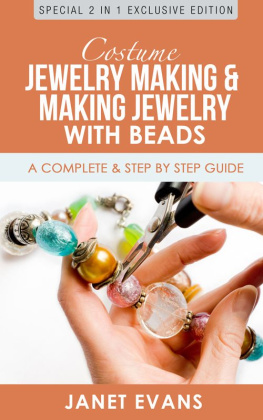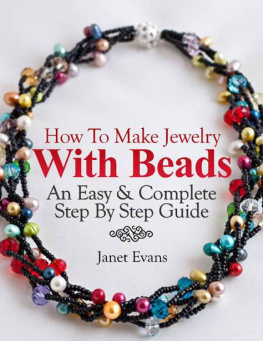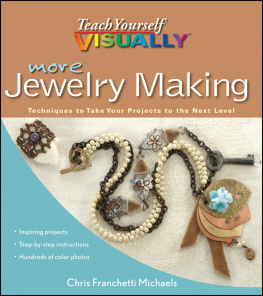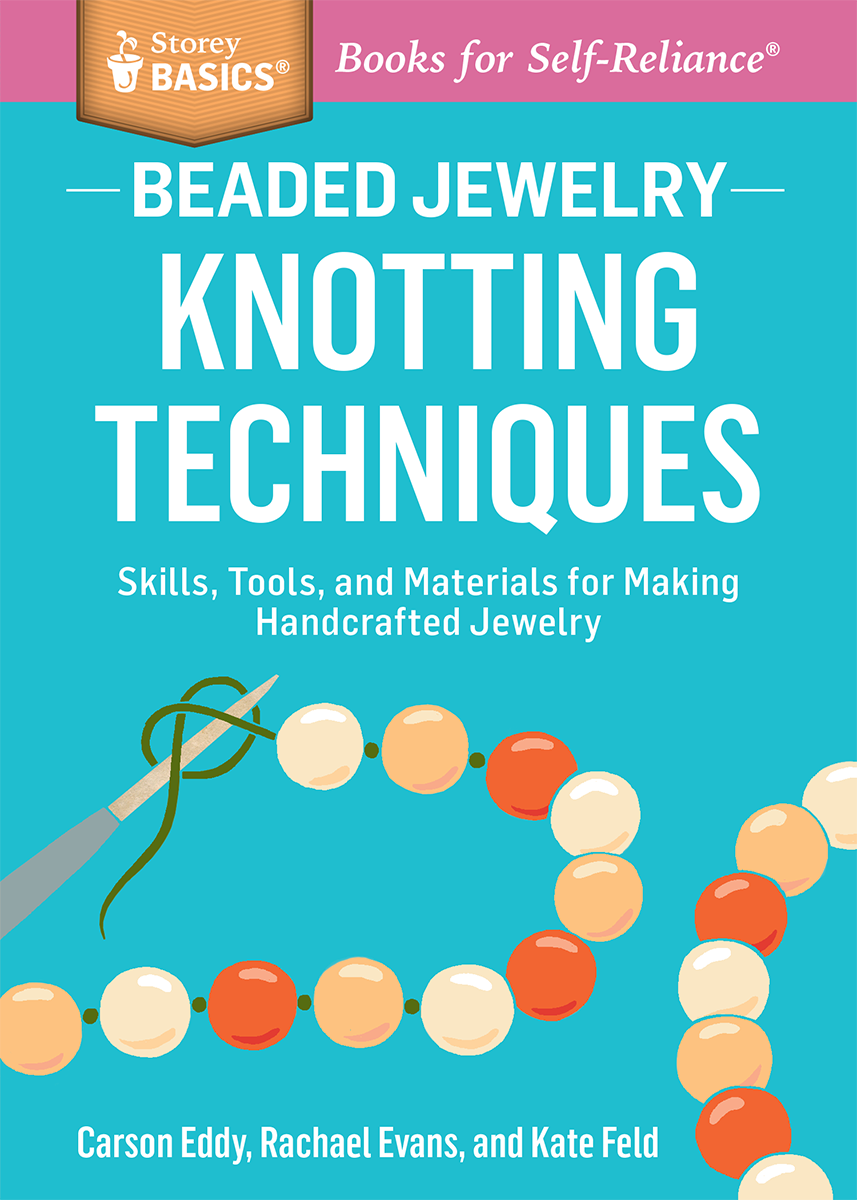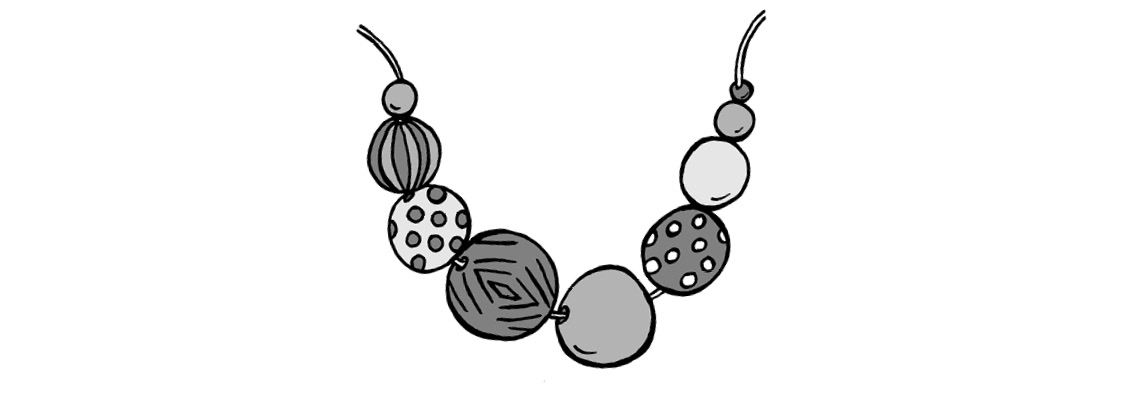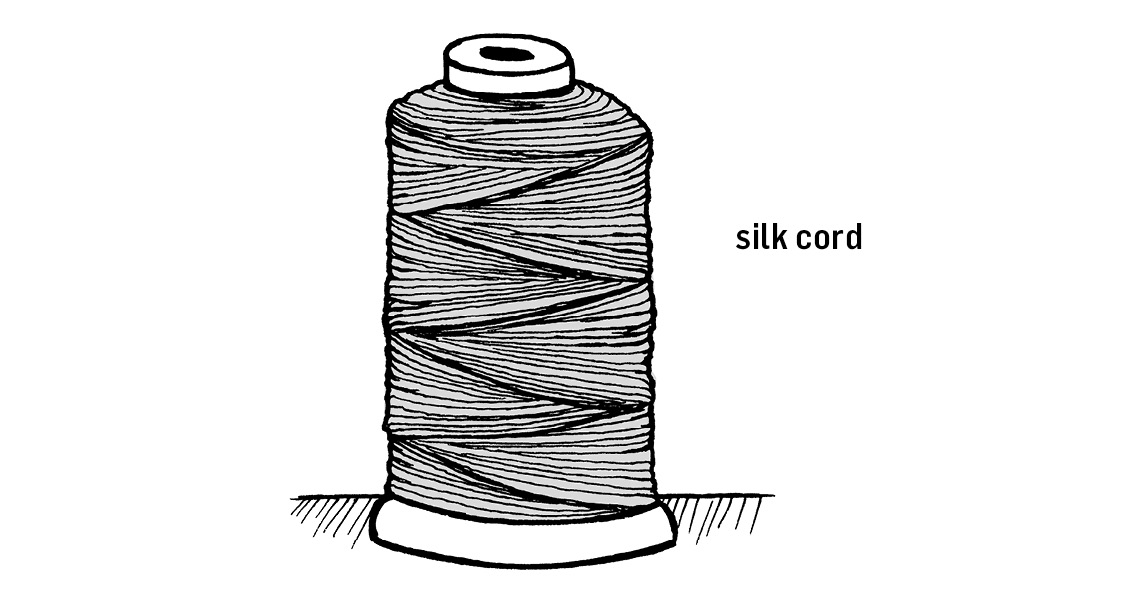Contents
Dedicated to our families and friends, who have supported us in all of our endeavors.
Introduction
Tying knots is an ancient practice with a legacy that extends back over 100,000 years in several cultures. Knotting originally had many practical purposes, but perhaps more significantly, it had symbolic and sacred purposes. Many of the worlds religions have used, and continue to use, some sort of knotted prayer beads to help the worshiper accurately repeat, from memory, the correct number of prayers or incantations required by his or her faith. In fact, the word bead is derived from the Anglo-Saxon biddan (to pray) and Middle English bede (prayer).
Over time, knots were used between beads for personal adornment rather than exclusively for ritualistic or religious purposes. Because pearls, gemstones, and other precious beads were so valuable, they were knotted on cord to protect them from rubbing against one another and to prevent loss if the cord were to break. This is still true today.
In the modern world, knotting between beads has become a routine practice, especially for pearls. In this book we explore pearls in depth by discussing pearl types, pearl quality, and pearl care. The other elements involved in making knotted jewelry are also discussed, including knotting cords, knotting tools, findings, and clasps. This book is designed as an easy reference guide to help you learn a new vocabulary and to teach you the basics of knotting between beads. To help you get started, we have included a series of easy-to-understand, step-by-step instructions.
Our combined years of experience as jewelry makers and teachers have taught us that mastering knotting between beads depends on learning good techniques, developing skills through hands-on experience, and lots of practice. This book has been designed as a handy reference, which we hope you will find useful for many years to come.
Carson, Rachael, and Kate
Chapter One
Knotting Cords
Selecting the most appropriate knotting cord for a particular project is an essential first step. Selection depends primarily on bead hole size, but bead size, bead weight, and personal preference should also be considered. Beads with very small holes, including pearls and precious gemstones, are most secure knotted on either small diameter silk or nylon.
Pearls are traditionally knotted on silk, but large-hole pearls look fantastic knotted on leather. Beads with average to large holes look great knotted on leather, waxed cotton, waxed linen, satin, or other large-diameter cords. Experiment with combinations of beads and cords to create unique knotted jewelry.
Nylon and Silk
Nylon and silk are the most commonly used cords for knotting between beads. Every time threads or cords are manufactured, small variations in the finished product can occur. For example, while the same dye may be used from batch to batch, small color variations can, and usually do, occur. A finishing treatment can change the feel of the thread or cord. In all cases, untreated threads and cords are thinner and lighter than ones that have been dyed, bonded, or treated in other ways.
Nylon and silk have distinct characteristics. In all cases, it is important to select the correct diameter cord for the particular beads you will be knotting. The cord should be thick enough so that the knots do not pull through the bead hole. However, if a single strand of heavyweight silk or nylon cord is not large enough to prevent the knots from sliding into the bead holes, there are several solutions.
How Much Cord to Use
To determine the amount of cord you will need for a project, a good rule of thumb is multiply the finished length of the project by 4 and round up to the nearest yard. For example, a 7-inch bracelet 4 = 28 inches of cord. Round up and use 1 yard or 36 inches of cord. For a 16-inch necklace, 16 4 = 64 inches. Round up and use 2 yards or 72 inches of cord.
First try using two or more strands of that particular cord. You can also try making multiple knots on top of one another, or you can try using a larger diameter cord like leather, waxed cotton, or satin. Each brand of nylon and silk cord is made using a different sizing system, so pay close attention to cord diameter when purchasing.
Nylon Cord
Nylon cord is a very popular material for knotting between all types of beads from tiny gemstones to large African trade beads. Nylon is a terrific alternative to silk because it does not stretch. A no-stretch nylon cord helps keep knots securely in place, especially when knotting heavier beads.
Nylon cord for knotting comes in two forms, carded nylon cord and spooled nylon cord. Both are available in a huge range of colors from subtle hues to bold tones. When adding a clasp to nylon cord, bead tips should be used.
- Carded nylon cord comes in several diameters and is sold on cards in various yardages. Carded nylon is a no-stretch cord that is available in a wide range of colors. Two popular brands are BeadSmith Beadstring and Griffin nylon cord. Griffin Beadcord is convenient because it comes with a beading needle already attached.
- Spooled nylon cord is a 3-ply twisted cord that also does not stretch. It comes in a range of diameters and is sold on both spools and cards in various yardages. The extensive range of available colors varies by brand. Spooled nylon cord is popular not only for knotting between beads, but also for micro macram and bead stringing. Two popular brands of nylon cord are C-Lon and S-Lon. Both brands are made in the United States.
Nylon thread is generally not recommended for knotting between beads because it is too small in diameter to securely keep beads in place. It is best used for bead weaving, bead embroidery, and hand stitching.
Silk Cord
Silk cord is most commonly used for knotting between pearls, but can also be used for knotting between other small, lightweight beads such as gemstones and Czech glass. It stretches easily, so stretching it before use is highly recommended (see ). Silk cord is sold on spools and on cards in a variety of diameters. Selecting the appropriate silk cord for knotting depends primarily on the pearl or bead hole size. When adding a clasp to silk cord, bead tips should be used.
Spooled silk bead cord is available on -ounce spools in a variety of diameters and in a wide range of colors. Spooled silk can be used in single, double, or multiple strands to knot between beads with a variety of bead hole sizes. Silk cord, especially spooled silk, will stretch, so it is recommended that spooled silk be stretched before use.
Carded silk bead cord is twisted to give it a sturdy surface and a high sheen. It often comes with a flexible beading needle already attached. It is available in various yardages, diameters, and colors. Like spooled silk cord, carded silk cord will stretch and should always be stretched before use.



